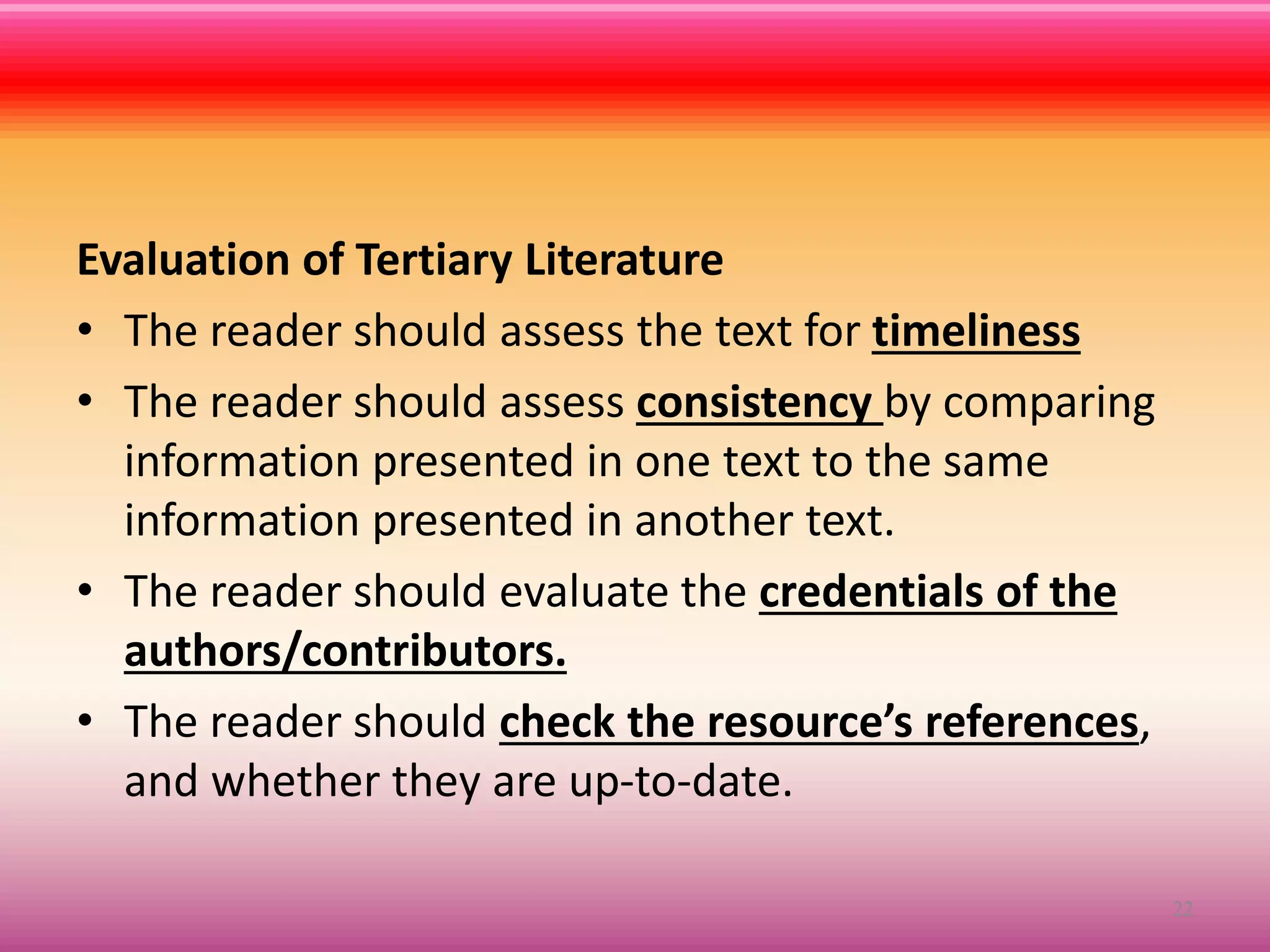This document discusses different types of drug information resources, including primary, secondary, and tertiary literature. Primary literature consists of original research studies and reports. Secondary literature includes indexing and abstracting services that systematically locate published literature and provide bibliographic citations and abstracts. Tertiary literature contains established drug information compiled from primary sources. When evaluating information sources, factors like author credentials, date, purpose, reliability and credibility should be considered. The internet provides drug information but requires careful evaluation of sources. University/academic websites are generally the most preferred online sources of health information.





































